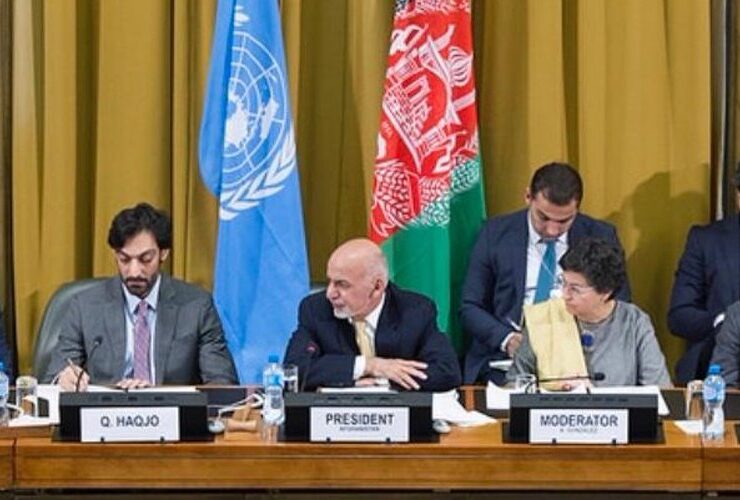BusinessDNA 10th Edition, Page 64
By Sameera Sarwar – ACCA Member, Co-founder of RomanSam Audit & Consulting Firm, and Senior Accounting Specialist of the Treasury Department, Ministry of Finance. Connect with her on Linkedin at @SameeraSarwar
Nearly half of the world’s population is under the age of 30, indicating how important the global youth is for our shared future Nations Population Fund (UNFP), about 63.7% of Afghans are under the age of 25 would support the statement that “Afghan youth is the power of the nation” – but only if meaningful opportunities are extended to them, and an enabling environment fostered to put their ideas to work and uplift the nation.
Recognizing the youth as assets by properly managing and improving their skills and knowledge sets makes a real difference in the development of a nation. Today, Afghanistan suffers from social, political and economic challenges, and with the right kind of support, our youth have the potential to solve all of these challenges. The younger generation can contribute to advancing multiple key areas, i.e., agriculture, entrepreneurship, healthcare, engineering, manufacturing, accounting, banking & finance, creative arts and design, etc.
Investment in enhancing a nation’s human capital, the next generation of skilled workers and young professionals is a no-regrets policy.
The Return on Capital (ROC) is several times greater on the investment made on youth. The process begins with improving the country’s education sector, notably transforming the non-formal education system into formal education, and encouraging young people’s entrepreneurial skills.
What are the obstacles to greater youth participation, and how can we overcome them?
According to the United Nations Children’s Fund (UNICEF) Afghanistan, an estimated 3.7 million children are out of school in Afghanistan, of which 60% are girls (3). The country often fails to support its most valuable assets because there is an absence of investment in youth and education. Young Afghan girls are kept away from their rightful place as ambassadors of economic growth and tomorrow’s leaders. Not least among youth in rural areas, fueling insecurity, violence, and terrorism.
Afghanistan’s low quality of education also leads to many graduates being ill-equipped and unfit for the modern-day job market. The government and international organizations should encourage, train and support youth to acquire the skills required by employers.
“Afghan youth is the power of the nation” – but only if meaningful opportunities are extended to them, and an enabling environment fostered to put their ideas to work and uplift the nation.”
One potential approach is to standardize the education curriculums of the Ministry of Education of Afghanistan (MoE) to match the varying needs of the market and to integrate formal education with practical industry training. Meaningful livelihoods, apart from being sources of income, are a basis for self-respect and dignity. Afghan youth need to secure decent employment to lead their communities.
Instead of only training young people to seek jobs, support them to generate opportunities, shifting from social dependency to self- sufficiency. The young generation’s engagement in entrepreneurship is possible by entering entrepreneurial training within the school and university curricula, supporting startups, facilitating access to finance, temporarily waiving taxes, and facilitating access to land and energy.
The National Procurement Authority (NPA) also needs to have a youth agenda. Adequate representation and a dedicated platform should be enabled exclusively for youth. Youth entrepreneurship is a long-term investment as it takes time for most small businesses to grow and scale up into successful companies, changing the way we work and live.
Young Afghan entrepreneurs are often required to procure imported goods, rather than sourcing
local products. Therefore, the government should recognize the impact that imported goods have on our economy, and offer protection to young entrepreneurs such as by providing low-cost electricity, subsidies to lower the production cost and maximize output in the manufacturing sector.
When I see Afghan youth, I see that they have the integrity, spirit and power to convince their fellow countrymen and women to live in peace and harmony, having learned the bitter lesson that conflict can only lead to devastation. Our youth are the backbone of this country, and empowering them can make Afghanistan a prosperous nation. They need a safe environment to efficiently and effectively manage national resources toward social and economic growth.
To create this platform, the Afghanistan National Youth policy was launched in 2015 by the Ministry of Information and Culture (MoIC), as a national program for youth to address challenges and offer capacity-building plans. This was intended to encourage youth participation in planning
and decision-making processes o actively contribute to the development of the country.
It is, therefore, fair to say that enforcing and encouraging our youth will help us achieve sustainable economic growth. Youth are the driving force of sustainability, and their role in the developmental plans of Afghanistan is paramount. The government and international partners need to focus on policy initiatives to promote Afghan youth leadership roles. This is only possible through engaging youth in all aspects of the public policy process – from crafting economic policies to their implementation, monitoring and evaluation. To complement this process, the government should provide technical and financial support so that the youth fulfill their potential as ambassadors of change.
“Our youth are the backbone of this country, and empowering them can make Afghanistan a prosperous nation. They need a safe environment to efficiently and effectively manage national resources toward social and economic growth.”
Read the full article at the BusinessDNA 10th Edition.








